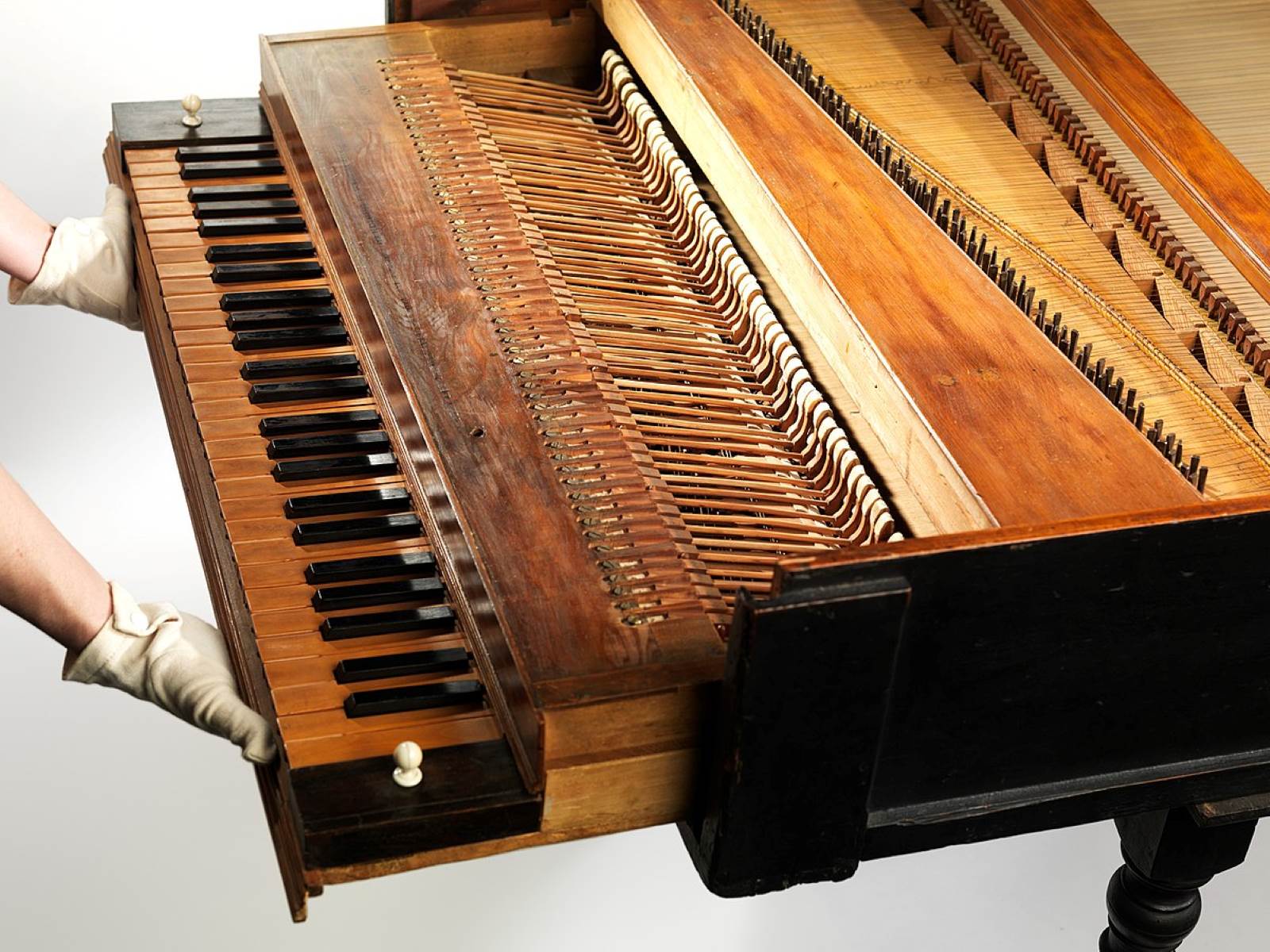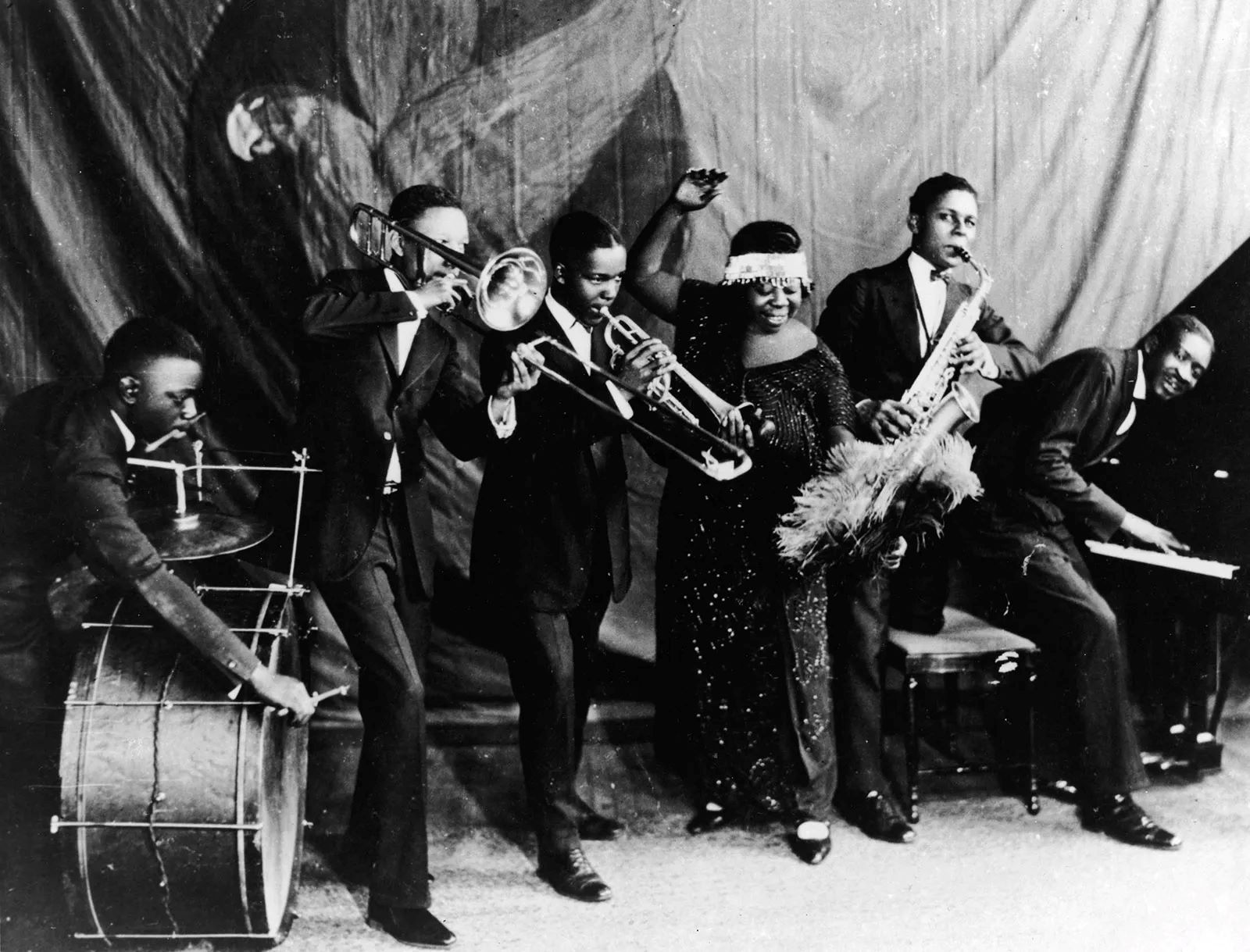Home>Devices & Equipment>Microphone>When Did The Microphone Get Invented


Microphone
When Did The Microphone Get Invented
Published: February 16, 2024
Discover the history of the microphone and learn about its invention and evolution over time. Explore the fascinating journey of the microphone's creation and development.
(Many of the links in this article redirect to a specific reviewed product. Your purchase of these products through affiliate links helps to generate commission for AudioLover.com, at no extra cost. Learn more)
Table of Contents
Introduction
The invention of the microphone revolutionized the way we communicate, entertain, and record history. This remarkable device has played a pivotal role in capturing and amplifying sound, shaping the realms of music, broadcasting, telecommunications, and numerous other fields. The journey of the microphone's evolution is a fascinating tale that spans centuries, marked by groundbreaking innovations and the relentless pursuit of audio excellence.
From the earliest sound amplification devices to the cutting-edge microphones of today, the quest for clearer, more accurate sound reproduction has been a driving force behind technological advancement. Understanding the origins of the microphone allows us to appreciate the ingenuity and determination of the inventors who paved the way for modern audio technology.
As we delve into the history of the microphone, we'll uncover the pivotal moments and key figures who contributed to its development. From the humble beginnings of sound amplification to the sophisticated microphones of the digital age, each milestone represents a triumph of human creativity and engineering prowess. Join us on a journey through time as we explore the captivating story of the microphone's invention and evolution.
Early Sound Amplification Devices
Long before the invention of the modern microphone, early civilizations sought ways to amplify sound for various purposes. One of the earliest sound amplification devices was the “megaphone,” which dates back to ancient times. The megaphone, typically made of wood or metal, was utilized to project the voice over long distances, aiding communication during public gatherings, military maneuvers, and theatrical performances.
Another notable precursor to the microphone was the “lover’s telephone,” a simple yet effective acoustic device used in the 17th century. Consisting of two hollow cones connected by a taut string or wire, the lover’s telephone transmitted sound vibrations from one end to the other, allowing individuals to converse across a considerable distance. While rudimentary, this early form of sound transmission laid the groundwork for future developments in audio technology.
During the 19th century, inventors and scientists made significant strides in sound amplification, leading to the creation of devices such as the “loose-contact carbon transmitter.” This innovative apparatus, developed by David Edward Hughes in 1878, utilized carbon granules to modulate electrical currents in response to sound waves. The carbon transmitter represented a crucial advancement in telephony, enabling the transmission of clearer and more intelligible speech over long distances.
These early sound amplification devices set the stage for the emergence of the microphone, demonstrating humanity’s enduring fascination with capturing and transmitting sound. The evolution of these primitive yet ingenious contrivances laid the foundation for the groundbreaking innovations that would ultimately give rise to the modern microphone as we know it today.
The Invention of the Carbon Microphone
The pivotal breakthrough in the evolution of the microphone came with the invention of the carbon microphone, a transformative device that revolutionized audio technology. In 1877, the illustrious inventor Thomas Edison, along with his associate Emile Berliner, developed the first practical carbon microphone. This groundbreaking invention marked a significant leap forward in the capture and amplification of sound, laying the groundwork for modern telephony and audio recording.
The carbon microphone operated on the principle of sound-induced variations in electrical resistance. It consisted of a diaphragm with a carbon contact, situated in close proximity to a carbon button. When sound waves caused the diaphragm to vibrate, the pressure on the carbon contact changed, resulting in corresponding fluctuations in electrical resistance. This variation in resistance modulated the electrical current, faithfully reproducing the incoming sound waves as electrical signals.
One of the defining characteristics of the carbon microphone was its remarkable sensitivity and ability to capture a wide range of frequencies. This made it an invaluable tool for early telephone systems and laid the foundation for the development of the recording industry. The carbon microphone’s reliability and versatility propelled it into widespread use, becoming a cornerstone of audio technology during the late 19th and early 20th centuries.
Edison’s carbon microphone represented a monumental achievement, revolutionizing communication and paving the way for the emergence of modern telecommunications and audio recording. Its impact reverberated across various industries, from broadcasting and entertainment to scientific research and beyond. The carbon microphone’s enduring legacy underscores its pivotal role in shaping the course of audio technology and its profound influence on the way we communicate and experience sound.
Development of the Dynamic Microphone
Following the era of the carbon microphone, the dynamic microphone emerged as a significant advancement in audio capture and reproduction. The dynamic microphone, also known as a moving-coil microphone, represented a pivotal innovation in the quest for improved sound quality and durability. This groundbreaking technology, introduced in the early 20th century, offered enhanced performance and versatility, cementing its status as a cornerstone of audio engineering.
The dynamic microphone operates on the principle of electromagnetic induction, utilizing a diaphragm attached to a coil of wire situated within a magnetic field. When sound waves cause the diaphragm to vibrate, the coil moves within the magnetic field, generating a fluctuating electrical current proportional to the sound input. This electrical signal is then amplified and transmitted, faithfully capturing the nuances of the original sound source.
One of the key advantages of the dynamic microphone is its robust construction and ability to withstand high sound pressure levels, making it well-suited for live performances, recording studios, and broadcast applications. Its durability and reliability made it a popular choice for musicians, vocalists, and sound engineers, contributing to its widespread adoption in the music industry and beyond.
Over the years, advancements in materials and engineering have led to refinements in dynamic microphone design, resulting in improved frequency response, sensitivity, and overall performance. These developments have further solidified the dynamic microphone’s position as a fundamental tool for capturing and reproducing sound with exceptional fidelity and clarity.
The enduring legacy of the dynamic microphone underscores its indispensable role in shaping the landscape of audio technology, serving as a cornerstone of professional audio production and reinforcing its status as a symbol of innovation and excellence in the realm of sound capture and reproduction.
The Electret Microphone
The advent of the electret microphone marked a significant milestone in the evolution of microphone technology, introducing a new era of compact, high-performance audio capture. Developed in the mid-20th century, the electret microphone represented a groundbreaking departure from traditional microphone designs, offering enhanced sensitivity, reliability, and miniaturization.
Unlike dynamic and condenser microphones that require external power sources, the electret microphone incorporates a permanently charged material, known as an electret, within its construction. This innovative design eliminates the need for external power, simplifying the microphone’s operation and allowing for greater portability and convenience.
The electret microphone’s compact size and exceptional sensitivity made it an ideal choice for a wide range of applications, including telecommunications, consumer electronics, and professional audio recording. Its versatility and reliability contributed to its widespread adoption in devices such as telephones, camcorders, and portable audio recorders, where compact size and high-quality audio reproduction were paramount.
Furthermore, advancements in electret microphone technology have led to the development of miniature and lavalier microphones, offering discreet and unobtrusive solutions for capturing audio in diverse settings, including film and television production, public speaking engagements, and theatrical performances.
With its enduring impact on the audio industry, the electret microphone stands as a testament to the ingenuity and innovation that continue to drive advancements in audio technology. Its compact design, exceptional performance, and versatility have solidified its status as an indispensable tool for capturing high-quality sound in a wide array of professional and consumer applications.
Conclusion
The evolution of the microphone stands as a testament to human ingenuity, creativity, and the relentless pursuit of audio excellence. From the early sound amplification devices of ancient civilizations to the sophisticated microphones of the digital age, the journey of microphone technology is a captivating narrative of innovation and progress.
The invention of the carbon microphone by Thomas Edison and Emile Berliner marked a pivotal turning point in audio technology, providing a reliable and sensitive means of capturing sound that would shape the course of telecommunications and recording. This milestone was followed by the development of the dynamic microphone, which offered enhanced durability and fidelity, becoming a staple in professional audio production and live performances.
The emergence of the electret microphone ushered in a new era of compact, high-performance audio capture, revolutionizing the landscape of consumer electronics and professional audio recording. Its innovative design and exceptional sensitivity have made it a ubiquitous presence in a diverse array of applications, from telecommunications to film and television production.
As we reflect on the remarkable journey of the microphone’s evolution, it becomes evident that each milestone represents a triumph of human innovation and a testament to the enduring quest for sonic perfection. The impact of these advancements reverberates across countless industries, enriching our lives through the seamless communication of ideas, the immersive experience of music and entertainment, and the preservation of historical moments through audio recording.
Looking ahead, the legacy of the microphone continues to inspire further advancements, driving the pursuit of ever-higher standards of audio fidelity, portability, and versatility. As technology continues to evolve, the microphone remains a symbol of our unwavering commitment to capturing and sharing the beauty of sound, ensuring that every whisper, every note, and every spoken word is faithfully preserved and amplified for generations to come.











